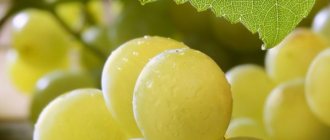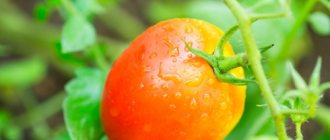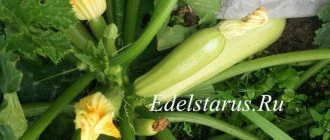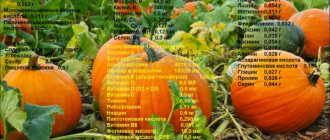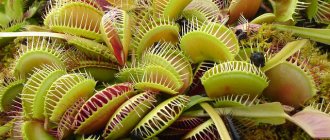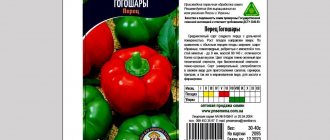Rye is one of the most common grain crops. Growing rye at home is not difficult if you know some of the nuances. But if you didn’t manage to grow a rich harvest, it doesn’t matter. We will help you cope with all difficulties.
In our article you will find useful information about the characteristics of rye as a cereal crop, detailed information about its sowing and caring for plants and harvesting. We have also prepared information about the beneficial properties of grain and methods of sprouting it.
- Growing conditions
- in autumn
- Medicinal properties
What does rye look like and where is it grown?
The seeds of the crop are characterized by high germination. The first shoots appear within three weeks after sowing, and the plant quickly gains green mass and begins to spike. Full ripening occurs 2 months after the formation of the first ears.
What does it look like
The seeds can be oval or elongated. There is a groove in the center. The color of the beans varies depending on the variety and can be yellow, brown, gray or white. Inside the seeds there is a mealy kernel, which, after grinding, is used to make baked goods.
Features of rye
The main feature of the culture is its winter hardiness. Even with severe frosts and the absence of snow cover, crops bring a large harvest. That is why the regions where this crop is grown are often not suitable for the cultivation of other grains due to the harsh climate.
Features of rye also include (Figure 1):
- Resistance to diseases and pests : crops are rarely damaged by diseases, in particular fungal ones;
- High yield , in comparison with other crops, makes it one of the most popular grains in the world;
- The rapid growth and development of plants allows you to reduce the cost of purchasing herbicides, since shoots most often grow before weeds;
- It is undemanding to the soil , so it can be grown even on infertile soils.
Figure 1. The main differences between popular grain crops
But once you know what rye looks like, you can understand its main drawback. Mature shoots are very tall, so they are easily damaged by strong wind or rain. This significantly complicates the harvesting process, but in general the crop is valued for its unpretentiousness, productivity and benefits.
The best varieties of rye
Modern breeders have developed a huge number of winter and spring varieties, which differ in the color and shape of the grain, as well as their demands on growing conditions.
Botanical description
The herbaceous plant has a well-developed fibrous root system. Root shoots penetrate to a depth of more than a meter, which allows the plant to obtain moisture even in sandy soils.
The hollow, straight stem, on average, grows to 80–100 cm. The main part is “bare”, and under the ear there is a soft, short pile. As it grows, 5-6 internodes are formed on it. The leaves are long, lanceolate, alternate. The plate is attached to the trunk using an “ear” that covers the stem. In many varieties, the upper side is covered with pile, which allows moisture to be retained.
The inflorescence is a spike with a complex structure. The length of the inflorescence is up to 15 cm, width - up to 1.2 cm. Its base is a tetrahedral axis, on the protrusions of which there are flat scaly spikelets. Each bears two flowers with a short, up to 3 mm, awn. Flower baskets have elongated anthers protruding above the spikelet. Pollination occurs with the help of wind.
Find out also about the use of cereals in landscape design.
The fruit is a long grain, consisting of many oblong grains in a hard shell. The kernels vary in size, color and shape. Grain length is 5–10 mm, width is 1.5–3.5 mm, shape is oval-round, oblong. The color of the outer shell is greenish-gray, gray-yellow, dark brown, yellow.
Ripe rye looks almost identical to wheat, but the two are easy to distinguish. The most characteristic discrepancies (for inexperienced farmers): the rye ear has a long and hard, frequent awn, the seed is flatter; in wheat it is short and sparse, and the grains are round.
Growing rye at home
Before sowing, you need to prepare the soil. It is better to do this in the fall, since winter varieties are sown early, and the seeds germinate quickly and are not afraid of frost. The area for sowing must be cleared of weeds and fertilized. It is also desirable that the soil is moist.
Note: If you can choose a site, it is better to sow seeds in well-lit hills. This way the grain crop will reach ripeness faster.
Growing grain crops at home requires strict adherence to crop rotation. The best predecessors are perennial grasses, oat crops, early potatoes, corn and flax. If perennial legumes were grown in the field, it is not recommended to sow cereals after them due to the increased nitrogen content. Table 1 shows approximate crop rotation schemes for this crop.
Growing conditions
The main condition for growing is the presence of an open, sunny area at an elevation. It is these fields that are best suited for this crop, since in such conditions the grains reach maturity faster.
Table 1. Main predecessor crops of rye
Before sowing, the soil is loosened, freed from weeds and organic (compost, manure) or mineral fertilizers (potassium, nitrogen and phosphorus) are applied. The sowing time depends on the type of crop. Winter varieties are sown a month and a half before the onset of stable cold weather, and spring varieties are sown in early spring in loose, fertilized soil. Early sowing will ensure a good harvest, as seedlings appear early and are not afraid of frost.
Technology for growing winter rye
Winter varieties are sown using the row or narrow-row method. However, experienced farmers advise using the narrow-row method, since in this case the area is optimally used and the seeds are distributed evenly.
Origin and distribution of the plant
There is still no single coherent version about the origin and cultivation of rye, only a lot of assumptions and hypotheses. Thanks to archaeologists and the artifacts found (writings, frescoes, fossils), it is known for certain that the ancient Egyptians, the peoples of Asia and India knew and cultivated culture already in the 4th century. BC.
Most scientists agree that the cereal originated on the territory of modern Iran and Turkey. The plant was eradicated as a weed that infests wheat and barley crops.
You may be interested in information about how buckwheat grows.
Over time, farmers noted the plant's resistance to cold and its ability to grow on poor soils and in mountainous areas. Since the crop grew practically unattended, did not require special participation of ancient farmers and survived where wheat and barley died en masse, it began to be cultivated. Due to its resistance to external factors, the cost of the harvest was low. All segments of the population could afford products made from rye grains, unlike wheat products.
Today, rye is grown in large quantities throughout almost the entire Northern Hemisphere, namely:
- North America;
- Canada;
- Scandinavian countries;
- Europe and Baltic countries;
- Russia;
- China.
Pay attention to the information on the use of buckwheat as green manure.
Caring for winter rye crops
Crop care is carried out year-round (Figure 3). In spring, it is necessary to remove excess moisture from the soil (if the field is in a lowland), since with increased water content the crops quickly die. In arid areas, it is necessary to retain snow on the fields so that there is enough moisture in the soil immediately before sowing. It is also necessary to harrow to saturate the soil with moisture and air and remove weed roots.
in autumn
Autumn care of crops is aimed at obtaining friendly and healthy shoots. To grow a crop you need to do the following:
- Rolling is carried out immediately after sowing, especially if the soil contains little moisture. With this process, the seeds adhere more closely to the soil and germinate better. However, on heavy and wet soils, rolling is strictly prohibited, as it causes too much compaction of the soil and the formation of a crust on the surface.
- Fertilizer increases the resistance of seeds to winter cold, however, the use of nitrogen fertilizers for these purposes is not recommended. It is better to give preference to phosphorus-potassium products.
- Hardening off plants helps strengthen them before winter and ensure vigorous germination.
Figure 3. Care of crops: snow retention, spraying and fertilization
After snow falls, measures must be taken to preserve the snow cover, as this protects the plants from frost and saturates the soil with sufficient moisture.
In summer
In summer, seedlings need to be monitored to prevent the death of crops from diseases and pests. Thus, the fall armyworm can cause great damage to the crop. To combat it, spraying with chemicals is used.
Root rot is equally harmful, so herbicides must be used to prevent weed growth. Crops are also periodically sprayed with special anti-lodging preparations (for example, TsetTseTse 460). They strengthen and thicken the stems, making them more resistant to strong winds and rain.
Harvest
Single-phase harvesting is performed with combines when the grain moisture content decreases to 20% . Due to the short harvesting period and the rapid fall of seeds, separate harvesting is often used. The rye is mowed and placed in windrows. After a few days, the stems and grain dry out. The windrows are collected and threshed. This method reduces grain loss due to shedding.
Winter rye yield
The crop yield depends on the region of cultivation , the selected variety or hybrid and is about 20 c/ha. For example, in the Republic of Kalmykia, farmers manage to collect an average of 9 c/g, and in the Krasnodar Territory - 37 c/ha.
Rye storage
Before harvesting, you need to know exactly what the crop looks like at maturity. During the period of waxy ripeness, the grains are hard, but the plants themselves do not lie down yet.
Note: It is important to carry out harvesting in a timely manner, since overstayed plants begin to crumble or are affected by fusarium.
The harvest must be stored in special rooms so that the grain is of high quality. Several methods are used for this (Table 2):
- Dry storage is considered the main storage method, since excess moisture is the main cause of spoilage of raw materials. For storage, special warehouses with stable temperature and humidity are equipped.
- Refrigerated storage is less popular because it requires special low-temperature storage facilities. Temperature instability in storage and violation of storage technology can reduce seed germination, so this method is only suitable for short-term storage.
- Storage in an oxygen-free environment helps protect seeds from pests and pathogens that develop only in the presence of oxygen. If you plan to use grain for sowing, you need to maintain the moisture level below a critical level. If this indicator is higher, seed germination is lost.
Table 2. Popular methods of storing grain
The type of storage is chosen depending on the financial capabilities of the farm and the climate. The first storage method is considered the simplest, since almost any room is suitable for these purposes.
From the video you will learn all the details of sowing and caring for crops at different times of the year.
Application of culture
Cereal grains are ground into flour, from which bread and dietary buns are baked. Nowadays, rye baked goods are considered healthy and lower in calories than those made from wheat flour. In ancient times it was the food of the poor and was considered coarse and heavy.
Did you know? Pliny the Elder, a statesman of Ancient Rome (1st century BC), said that you can only eat rye bread when you are extremely hungry. And in the countries of the Ancient East, the plant was even considered a weed; in Persian, its name is “jou-dar” - one that clogs crops.
Bread kvass is one of the most popular drinks among the Slavs, and made from black bread it is also healthy and has less calories. In addition to baking flour, they produce starch, which is not inferior in quality to its potato counterpart. Alcohol is obtained from grain for the production of strong alcohol or for medical use. Rye beer is popular in Germany and Western Europe.
The cereal crop is used to make feed for livestock. Poultry are given sprouted seeds. The plant is an excellent green manure, which improves the soil structure and suppresses weeds. In the past, straw was used for roofing in homes; in some villages it is still used in the construction of outbuildings. The material is cheap, accessible and quite durable.
Important! Rye crops repel many pests, so the crop is often used as a precursor for growing agricultural plants.
Rye is a grain crop that occupies one of the main places in the agricultural industry. Products made from grain contain many useful elements necessary for the body.
Winter rye processing
Winter rye is processed to produce flour. Depending on the processing technology, there are several types of flour:
- The sifted flour is white with a slight grayish tint. It is soft, finely ground and widely used in bakery enterprises.
- Peel flour has many more large particles and shells and is characterized by a gray-white color.
- Wallpaper flour is coarsely ground. It is gray and is as close as possible to seeds in composition.
Dough made from rye flour gradually darkens, which is why the bread differs significantly from wheat in color.
How is rye different from wheat?
In appearance, rye and wheat grains differ in color: rye cereals for the most part have a gray-green color, less often - brown. This is the reason for the color of rye bread.
Differences between rye and wheat
In addition to color differences, rye and wheat differ at the morphological level.
- Wheat is a self-pollinating plant, while rye is wind-pollinated.
- Rye is more resistant to climatic conditions, soil type, moisture levels and temperature fluctuations.
- Rye sprouts have one more primary root than wheat - 3 versus 4.
- Rye grain is richer in vitamin and mineral composition.
- Rye and wheat leaves vary in color. Rye leaves are most often bluish-gray in color, while wheat leaves are bright green. But after the ears ripen, it is unlikely to be possible to distinguish the leaves by color - the difference disappears.
Rye grain is the record holder among grain crops for sugar content. In addition, rye grain contains over 10 essential and 8 nonessential amino acids. The mineral substances contained in rye grain include: sulfur, phosphorus, calcium, magnesium, potassium, sodium, silicon; and to vitamins: A, a whole complex of vitamins B, E, H, PP.
Advantages
Benefits of rye as green manure
Rye as a green manure has many advantages . She:
- is an ideal soil loosener;
- protects the soil from weeds;
- promotes the formation and preservation of useful elements in the soil;
- unique elements of the root system have the ability to repel nematodes.
After planting plants in soil enriched with rye, the yield of most crops increases by 30–40% .
Agronomists recognize the effectiveness of both methods of improving soil fertility - plowing green mass into the ground and leaving winter rye under the snow.
The long-awaited harvest is ready
The life cycle of an agricultural crop consists of several stages. It starts to grow faster than weeds, so it drowns them out. Literally 18 days after tillering, a tube appears. Heading is observed after 15 days. At this stage of ripening, the crops take on a bluish tint, while the wheat turns green. Flowering begins after 13 days and lasts 12 days.
Agronomists have researched and know exactly when rye ripens. It takes 2 months from the moment of heading to full ripeness.
The grain ripens at the end of waxy maturity. At this stage, no nutrients are supplied to it. If you start harvesting winter rye too late, the grain will all fall off. An unripe crop has too wet and long stems. They, in turn, will wrap around the combine drum and complicate the threshing process. After mowing, windrows are formed in which the grain ripens for 2 to 7 days. Then it is threshed. And now the rye is ready, but what is made from it?
Harvesting is carried out when the stubble reaches 18-20 cm, and the density of such sowing should be 300 stems/1 m².
Chemical composition, trace elements, vitamins
Per 100 g of grains there are:
- proteins – 9.9;
- fats – 2.2;
- carbohydrates – 55.8;
- calorie content – 283 kcal.
The grains contain microelements: Mg, Ca, S, Cl, Zn, Fe.
Vitamins included: B7, E, B3, B5, B1, B6, B2, K, P.
Acid balance (pH) 4.3-5.5.
Beneficial features
Rye contains a lot of nutrients, but in past centuries it was considered a rough food for peasants and common people. Thanks to this cereal, poor people in Rus' survived during long and harsh winters.
Rye also has medicinal properties:
- has a beneficial effect on the cardiovascular system;
- strengthens the immune system;
- normalizes the functioning of the nervous system;
- affects the condition of the skin, hair and nails;
- improves blood circulation;
- normalizes the functioning of the gastrointestinal tract;
- reduces blood glucose levels.
For the healthy gastrointestinal tract of a healthy person, this cereal does not pose any danger and is perfectly digestible. It promotes weight loss by normalizing intestinal microflora, alkalizing the body and restoring normal metabolism.
Rye is added to the diet by diabetics, since its glycemic index is low: in sprouts - 34 units, in flour with bran - 32 units, in whole grains - 40 units.
Harm
Rye contains gluten, so it should not be consumed by people with celiac disease. For them, this substance is contraindicated, as well as for patients with gastrointestinal disorders - ulcers and gastritis with increased stomach acidity.
The benefits of green organics
Green manures are natural organic fertilizers that provide natural nutrition and exchange of nutrients in the soil. Their main advantage is safety for the environment, which is why such plants are often grown in summer cottages. It has been proven that natural fertilizers can increase soil fertility in the garden several times. In addition, they contribute to the accumulation of nutrients in the soil, thereby providing nutrition and support to plants throughout the entire period of development.
